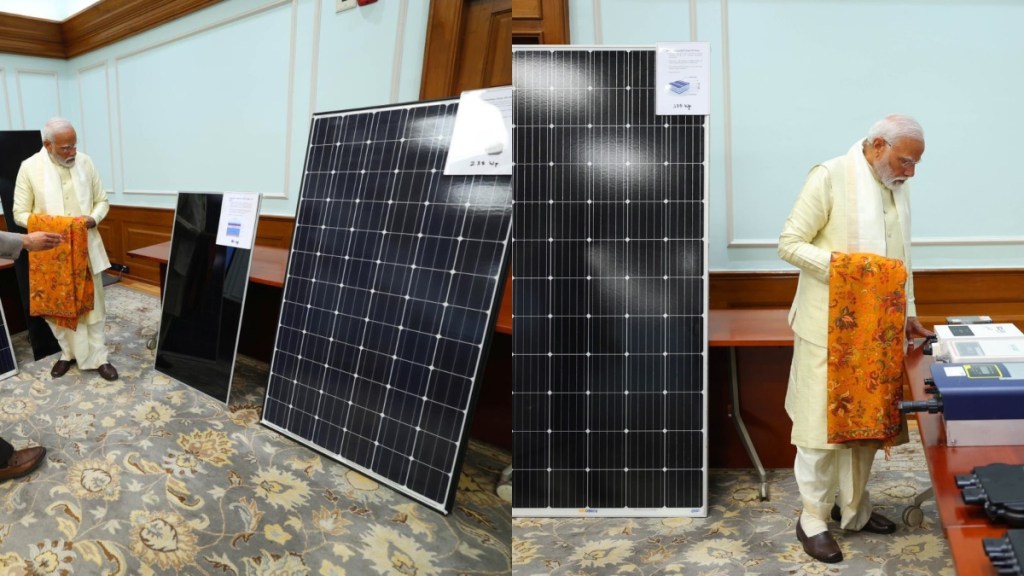Prime Minister Narendra Modi, who led the Ram Temple ceremony on January 22, launched a scheme soon after under which one crore homes will have rooftop solar systems.
Pradhanmantri Suryodaya Yojana
The Prime Minister launched the ‘Pradhanmantri Suryodaya Yojana’ on January 22 in a meeting at his Lok Kalyan Marg. The scheme aims to install rooftop solar systems in one crore homes.
Talking about the launch of the scheme, PM Modi wrote on X, formerly Twitter, “Today, on the auspicious occasion of consecration in Ayodhya, my resolution got further strengthened that the people of India should have their own solar roof top system on the roof of their houses.”
He said the launch of the scheme is the first decision he took after getting back from Ayodhya, adding that this initiative aims not only to lower the electricity expenses for the impoverished and middle-class citizens but also to foster India’s self-sufficiency in the energy sector. After returning from Ayodhya, where he participated in the consecration ceremony, PM Modi shared images of his discussions with officials regarding the scheme on X.
The Prime Minister instructed the commencement of an extensive national campaign to encourage widespread adoption of rooftop solar among residential consumers.
During the meeting, he stressed on the fact that every household with a roof in India can harness the power of the sun to reduce their electricity bills. The Pradhanmantri Suryodaya Yojana strives to furnish electricity to individuals with low and middle incomes by implementing solar rooftop installations, while also providing opportunities for additional income through surplus electricity generation.
India’s solar capacity
As of December 2023, the solar power installed capacity in India has achieved approximately 73.31 GW, while the rooftop solar installed capacity stands at around 11.08 GW, as reported by The Indian Express citing Ministry of New and Renewable Energy’s website.
In terms of overall solar capacity, Rajasthan leads with 18.7 GW, securing the top position, while Gujarat follows closely at the second spot with 10.5 GW. In the realm of rooftop solar capacity, Gujarat takes the lead with 2.8 GW, with Maharashtra following at the second position with 1.7 GW. Significantly, solar power constitutes a substantial portion of the nation’s current renewable energy capacity, which is approximately 180 GW.


